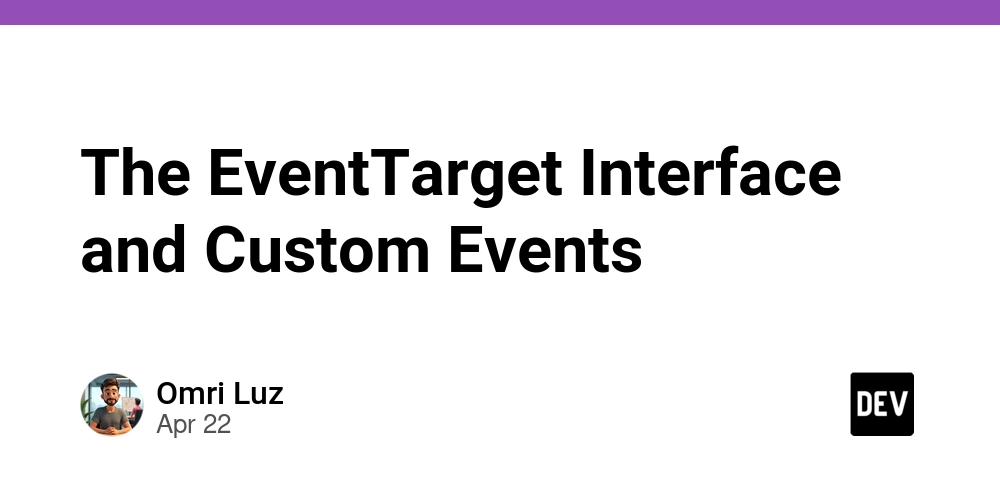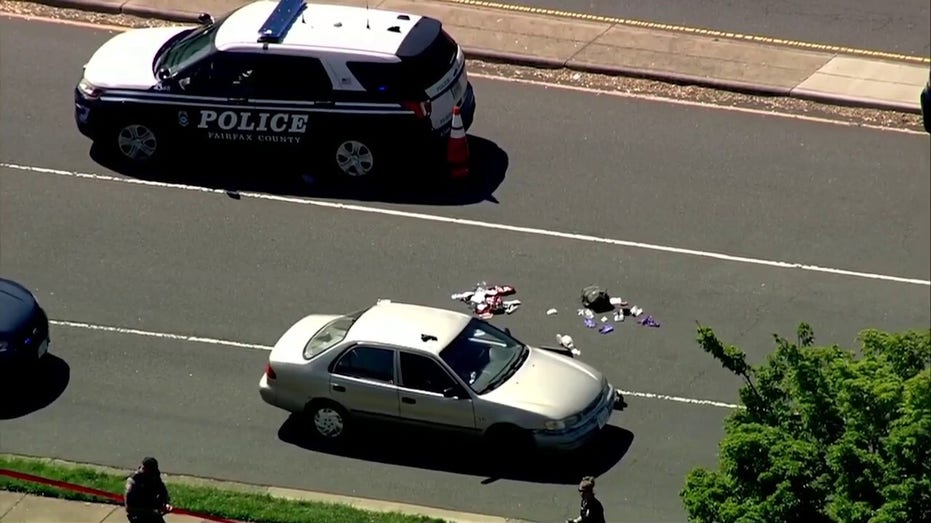The EventTarget Interface and Custom Events
The EventTarget Interface and Custom Events in JavaScript: An Exhaustive Guide Table of Contents Introduction Historical Context Understanding the EventTarget Interface 3.1 Definition 3.2 Methods and Properties Custom Events: Definition and Creation 4.1 Creating Custom Events 4.2 Advanced Custom Event Features: detail, bubbles, and cancelable Complex Scenarios with Custom Events 5.1 Event Delegation and Bubbling 5.2 Capturing Phase 5.3 Custom Events in Complex Applications Performance Considerations 6.1 Memory Usage 6.2 Event Listener Management 6.3 Throttling/Debouncing Edge Cases and Pitfalls 7.1 Uncaught Exceptions 7.2 Memory Leaks Real-World Use Cases Debugging Techniques Comparison with Alternative Approaches Conclusion References and Further Reading 1. Introduction The EventTarget interface, a cornerstone of the JavaScript event model, is essential for handling events in web applications. Custom events allow developers to create bespoke events tailored to specific application needs. Understanding EventTarget, coupled with efficient custom event creation, can significantly enhance event management in complex applications. 2. Historical Context The origins of events in JavaScript date back to the advent of the Document Object Model (DOM) in the mid-1990s. Initially, event handling was primarily conducted via inline event handlers and deprecated methods such as attachEvent in older versions of Internet Explorer. The introduction of addEventListener and the Event object in the DOM Level 2 specification transformed the landscape, leading to a more consistent and robust event-handling mechanism. The EventTarget interface emerged as a key abstraction, encapsulating the event management functionalities. It brought forth standardized methods, paving the way for asynchronous programming paradigms and rich user interactions—a crucial need for modern web applications. 3. Understanding the EventTarget Interface 3.1 Definition EventTarget is a foundational interface in the DOM that defines methods for handling events. Any DOM object that can receive events (like document, window, or individual elements) can be regarded as an EventTarget. 3.2 Methods and Properties of EventTarget The EventTarget interface encapsulates key methods for event handling: addEventListener(type, listener, options): Registers an event handler for the specified event type. removeEventListener(type, listener, options): Unregisters a previously registered event handler. dispatchEvent(event): Dispatches an event to the specified target, invoking any attached listeners. Example: Basic Event Handling const button = document.getElementById('myButton'); function handleClick(event) { console.log('Button clicked!', event); } button.addEventListener('click', handleClick); 4. Custom Events: Definition and Creation 4.1 Creating Custom Events Custom events are instances of the Event class used to fire user-defined events. Developers can enhance these events with additional data and behavior. Basic Custom Event Creation const myEvent = new Event('myCustomEvent'); document.dispatchEvent(myEvent); document.addEventListener('myCustomEvent', () => { console.log('Custom event triggered!'); }); 4.2 Advanced Custom Event Features Custom events can be equipped with additional properties; for instance, the detail property allows us to pass extra data. const myCustomEvent = new CustomEvent('myEvent', { detail: { key: 'value' }, bubbles: true, cancelable: true, }); document.dispatchEvent(myCustomEvent); These options not only allow the event to propagate but also give developers control over event handling (e.g., whether the event can be prevented). 5. Complex Scenarios with Custom Events 5.1 Event Delegation and Bubbling Understanding event bubbling and delegation is crucial for optimal event management. It allows capturing events that originate from child elements without attaching direct listeners to each. Example: Delegation document.getElementById('parent').addEventListener('click', (event) => { if (event.target.matches('.child')) { console.log('Child element clicked!', event.target); } }); This method scales better than individual listeners on each child, especially in dynamic content or large DOM trees. 5.2 Capturing Phase Events can be intercepted in the capturing phase before reaching their target. The useCapture argument in addEventListener can enable this behavior. document.getElementById('parent').addEventListener('click', (event) => { console.log('Capturing at parent level'); }, true); // true enables capturing phase 5.3 Custom Events in Complex Applications Custom events facilitate complex interaction patterns such as notific

The EventTarget Interface and Custom Events in JavaScript: An Exhaustive Guide
Table of Contents
- Introduction
- Historical Context
-
Understanding the EventTarget Interface
- 3.1 Definition
- 3.2 Methods and Properties
-
Custom Events: Definition and Creation
- 4.1 Creating Custom Events
- 4.2 Advanced Custom Event Features: detail, bubbles, and cancelable
-
Complex Scenarios with Custom Events
- 5.1 Event Delegation and Bubbling
- 5.2 Capturing Phase
- 5.3 Custom Events in Complex Applications
-
Performance Considerations
- 6.1 Memory Usage
- 6.2 Event Listener Management
- 6.3 Throttling/Debouncing
-
Edge Cases and Pitfalls
- 7.1 Uncaught Exceptions
- 7.2 Memory Leaks
- Real-World Use Cases
- Debugging Techniques
- Comparison with Alternative Approaches
- Conclusion
- References and Further Reading
1. Introduction
The EventTarget interface, a cornerstone of the JavaScript event model, is essential for handling events in web applications. Custom events allow developers to create bespoke events tailored to specific application needs. Understanding EventTarget, coupled with efficient custom event creation, can significantly enhance event management in complex applications.
2. Historical Context
The origins of events in JavaScript date back to the advent of the Document Object Model (DOM) in the mid-1990s. Initially, event handling was primarily conducted via inline event handlers and deprecated methods such as attachEvent in older versions of Internet Explorer. The introduction of addEventListener and the Event object in the DOM Level 2 specification transformed the landscape, leading to a more consistent and robust event-handling mechanism.
The EventTarget interface emerged as a key abstraction, encapsulating the event management functionalities. It brought forth standardized methods, paving the way for asynchronous programming paradigms and rich user interactions—a crucial need for modern web applications.
3. Understanding the EventTarget Interface
3.1 Definition
EventTarget is a foundational interface in the DOM that defines methods for handling events. Any DOM object that can receive events (like document, window, or individual elements) can be regarded as an EventTarget.
3.2 Methods and Properties of EventTarget
The EventTarget interface encapsulates key methods for event handling:
- addEventListener(type, listener, options): Registers an event handler for the specified event type.
- removeEventListener(type, listener, options): Unregisters a previously registered event handler.
- dispatchEvent(event): Dispatches an event to the specified target, invoking any attached listeners.
Example: Basic Event Handling
const button = document.getElementById('myButton');
function handleClick(event) {
console.log('Button clicked!', event);
}
button.addEventListener('click', handleClick);
4. Custom Events: Definition and Creation
4.1 Creating Custom Events
Custom events are instances of the Event class used to fire user-defined events. Developers can enhance these events with additional data and behavior.
Basic Custom Event Creation
const myEvent = new Event('myCustomEvent');
document.dispatchEvent(myEvent);
document.addEventListener('myCustomEvent', () => {
console.log('Custom event triggered!');
});
4.2 Advanced Custom Event Features
Custom events can be equipped with additional properties; for instance, the detail property allows us to pass extra data.
const myCustomEvent = new CustomEvent('myEvent', {
detail: { key: 'value' },
bubbles: true,
cancelable: true,
});
document.dispatchEvent(myCustomEvent);
These options not only allow the event to propagate but also give developers control over event handling (e.g., whether the event can be prevented).
5. Complex Scenarios with Custom Events
5.1 Event Delegation and Bubbling
Understanding event bubbling and delegation is crucial for optimal event management. It allows capturing events that originate from child elements without attaching direct listeners to each.
Example: Delegation
document.getElementById('parent').addEventListener('click', (event) => {
if (event.target.matches('.child')) {
console.log('Child element clicked!', event.target);
}
});
This method scales better than individual listeners on each child, especially in dynamic content or large DOM trees.
5.2 Capturing Phase
Events can be intercepted in the capturing phase before reaching their target. The useCapture argument in addEventListener can enable this behavior.
document.getElementById('parent').addEventListener('click', (event) => {
console.log('Capturing at parent level');
}, true); // true enables capturing phase
5.3 Custom Events in Complex Applications
Custom events facilitate complex interaction patterns such as notification systems or data-binding frameworks, vital in modern SPA frameworks like React or Vue. For instance, a component could emit a custom event whenever its data changes.
6. Performance Considerations
6.1 Memory Usage
Listeners must be managed judiciously to prevent memory leaks. Avoid anonymous functions or use WeakReferences where applicable to ensure listeners can be garbage collected.
6.2 Event Listener Management
Event listener management can impact performance. Utilize batching calls or throttling approaches to minimize reflows and repaints during rapid events (like scrolling or resizing).
Throttling Example
const throttledEvent = (func, limit) => {
let lastFunc;
let lastRan;
return function() {
const context = this;
const args = arguments;
if (!lastRan) {
func.apply(context, args);
lastRan = Date.now();
} else {
clearTimeout(lastFunc);
lastFunc = setTimeout(() => {
if ((Date.now() - lastRan) >= limit) {
func.apply(context, args);
lastRan = Date.now();
}
}, limit - (Date.now() - lastRan));
}
};
};
window.addEventListener('resize', throttledEvent(() => {
console.log('Resized!');
}, 1000));
7. Edge Cases and Pitfalls
7.1 Uncaught Exceptions
Uncaught exceptions within event handlers can halt the execution of subsequent attached handlers. Proper try-catch blocks can mitigate this issue.
7.2 Memory Leaks
Event listeners must be properly removed, particularly when elements are removed from the DOM, to prevent memory build-up.
const button = document.getElementById('myButton');
function handleClick() {
console.log('Button clicked');
}
button.addEventListener('click', handleClick);
// Ensure to remove the listener
button.removeEventListener('click', handleClick);
8. Real-World Use Cases
- Single Page Applications (SPAs): Custom events in frameworks like Angular allow for component communication without direct references.
- Gaming: UI event management via custom events for game state updates, player actions, etc.
- Data Binding: Reactive programming libraries utilize custom events to synchronize data state across various components.
9. Debugging Techniques
Utilizing browser developer tools is key to debugging event issues. The "Event Listeners" tab reveals attached listeners, and applying breakpoints in event handlers can trace execution flow.
Using console.trace()
This method can provide a call stack to identify where an event listener was invoked from, which is immensely useful for tracking down unexpected behaviors.
10. Comparison with Alternative Approaches
Observables (RxJS)
While traditional EventTarget interfaces provide a straightforward mechanism for events, libraries like RxJS provide a more functional approach with observable streams. They enable complex asynchronous choreography, which is particularly beneficial in reactive programs.
Promises and Async/Await
Unlike events, which handle asynchronous triggers, Promises are designed for one-time asynchronous operations. Although both paradigms address different paradigms of async programming, utilizing both in conjunction allows for advanced patterns (e.g., event-driven functional programming).
11. Conclusion
The EventTarget interface and custom events form the backbone of JavaScript's event-driven architecture, enabling rich interactivity and complex application interactions. Mastery of these concepts allows developers to architect robust applications, driving engagement and ensuring maintainability.
12. References and Further Reading
- MDN Web Docs: EventTarget
- MDN Web Docs: CustomEvent
- JavaScript.info: Events
- Eloquent JavaScript: Events
This exploration of the EventTarget interface and custom events aims to provide a comprehensive understanding and guide for senior developers, enhancing the ability to build performant, maintainable, and complex applications across various contexts.






































































